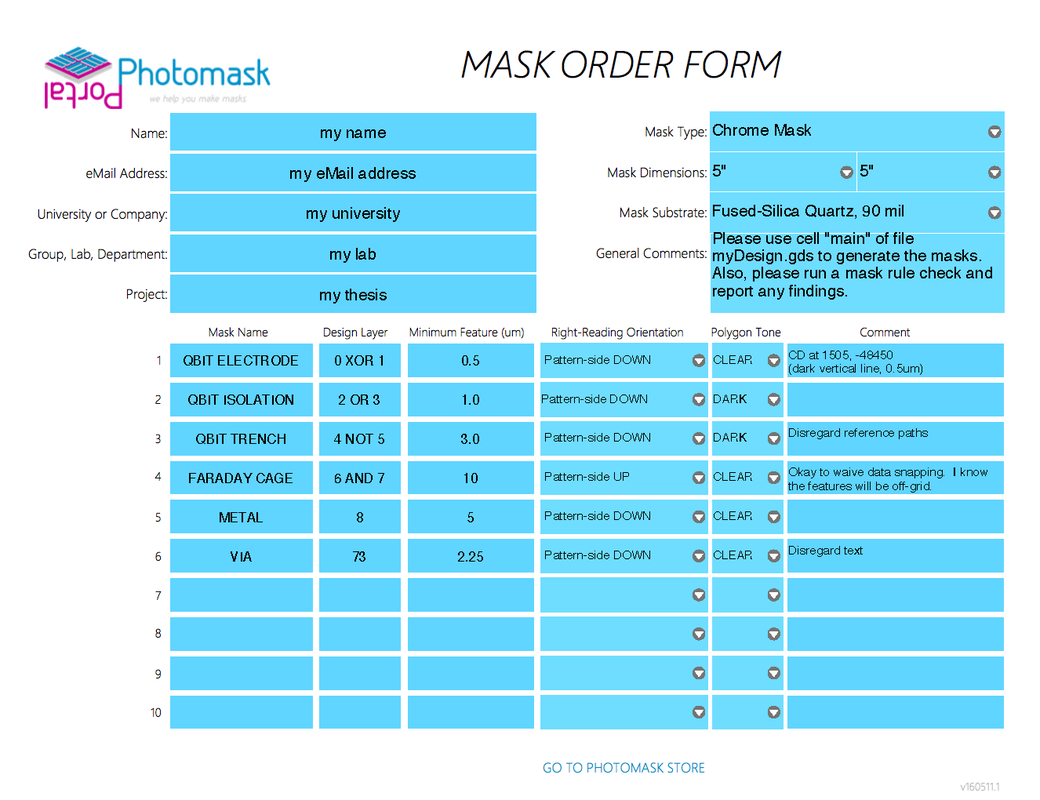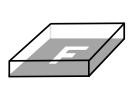Mask Order Form Instructions
For each mask, here is the essential information we need to know:
Mask Name: What name do you call each mask?
Design Layers: Which layer number in the design file represents each mask? It can be a simple 1-to-1 mapping like layer 1 in the design file maps to mask 1, layer 2 in the design file maps to mask 2, etc. Or you have the option to derive a mask with a boolean combination of multiple design layers. For example, mask 1 can be mapped to "1 OR 30 XOR 51" in the design file (executed left to right). Valid boolean operators include OR (+), AND (*), XOR, and NOT (-).
Minimum Feature Size: What is the smallest feature in your design that you expect to resolve on the mask to a specified dimensional tolerance? For example, there may be 50nm slivers in your data but the smallest feature you expect to resolve is 0.5um. In that case the minimum feature should be 0.5um.
|
Orientation: We need to know if we should mirror the pattern you supply. The best way to specify this is be defining the "right-reading" orientation. Should text in your design read-right with the pattern-side of the mask facing you (e.g. chrome-up) or with the pattern-side facing away from you (e.g. chrome-down, looking through the glass).
|
Tone: There are different ways to specify the tone on a mask but we prefer POLYGON TONE. Specifically, do the polygons in the design represent clear area or dark area on the mask? The polygons may be referred to as "digitized data" (e.g. digitized data clear or digitized data dark). This is NOT the same as field tone (e.g. clear field / dark field), terminology that can be ambiguous depending on how the design is drawn.
Comments: You can use this field to specify the coordinates of a feature you would like us to measure (your CD) or any other special instructions.


